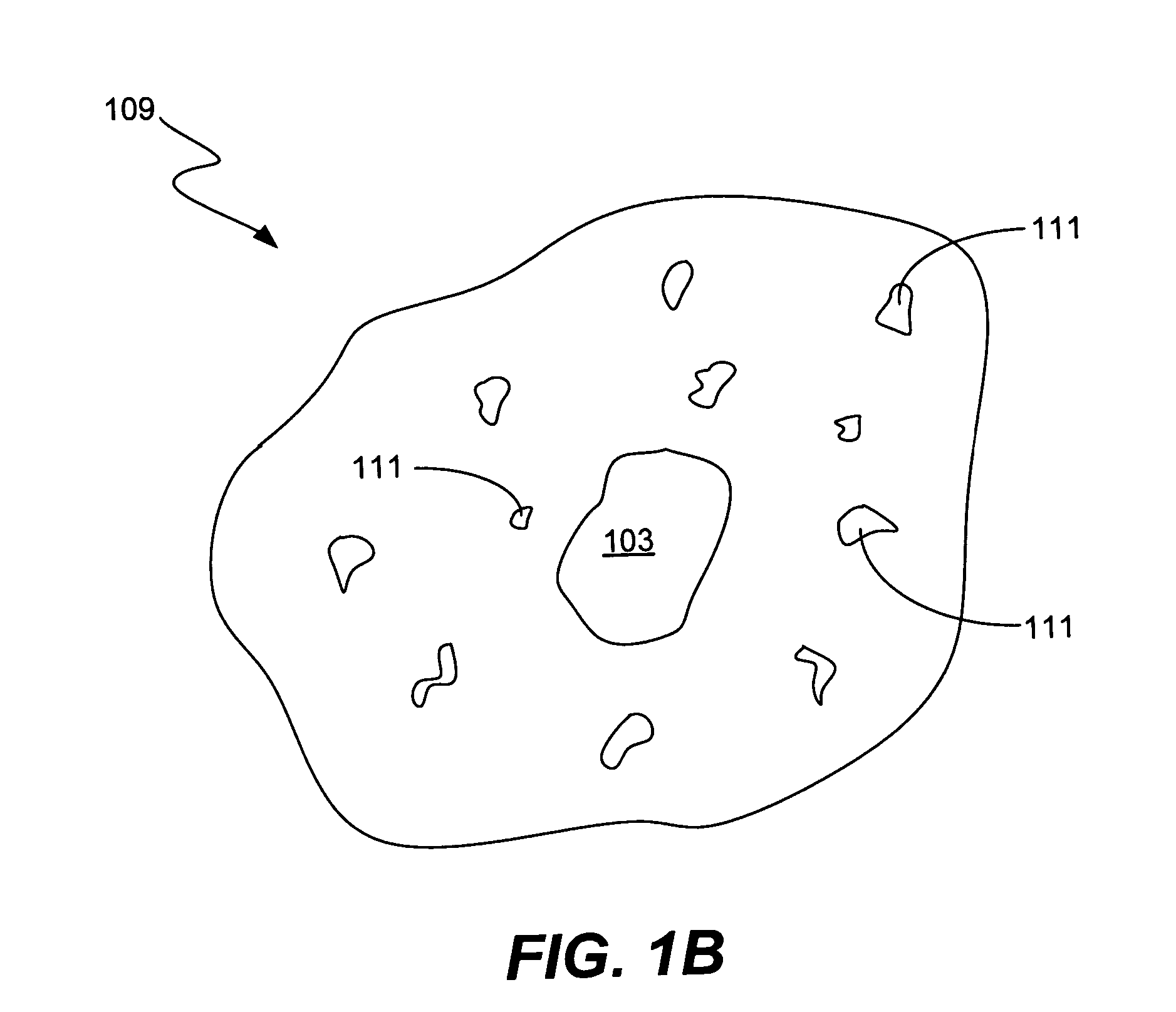Image analysis of the golgi complex
a technology of golgi complex and image analysis, which is applied in the field of image analysis of golgi complex, can solve the problems of insufficient realization of the value of golgi complex as an indicator, and no simple, consistent technique for characterizing
- Summary
- Abstract
- Description
- Claims
- Application Information
AI Technical Summary
Benefits of technology
Problems solved by technology
Method used
Image
Examples
examples
[0096] The following examples each involved generation and analysis of images obtained from SKOV3 cells treated with a Lens culinaris lectin marker. The cells were incubated with each drug for 24 hours before fixation and staining. In each case, ring regions were obtained by the Golgi segmentation algorithm described above. In addition, the Golgi complex within those ring regions was predicted, using a CART model as described above, as either normal, diffuse, dispersed, or diffuse and dispersed.
[0097] In a first example, SKOV3 cells that were treated with a low concentration (0.6 nanomolar) of the anti-microtubule drug Taxol. In this example, the Golgi complex remains normal as determined by the model. An expert independently examined the images and concluded that the Golgi complex was normal. In a second example, SKOV3 cells treated with a high concentration (2.6 micromolar) of microtubule-de polymerizing drug Nocodazole. Using the same model, the Golgi complex was found to be dis...
PUM
 Login to View More
Login to View More Abstract
Description
Claims
Application Information
 Login to View More
Login to View More - R&D
- Intellectual Property
- Life Sciences
- Materials
- Tech Scout
- Unparalleled Data Quality
- Higher Quality Content
- 60% Fewer Hallucinations
Browse by: Latest US Patents, China's latest patents, Technical Efficacy Thesaurus, Application Domain, Technology Topic, Popular Technical Reports.
© 2025 PatSnap. All rights reserved.Legal|Privacy policy|Modern Slavery Act Transparency Statement|Sitemap|About US| Contact US: help@patsnap.com



